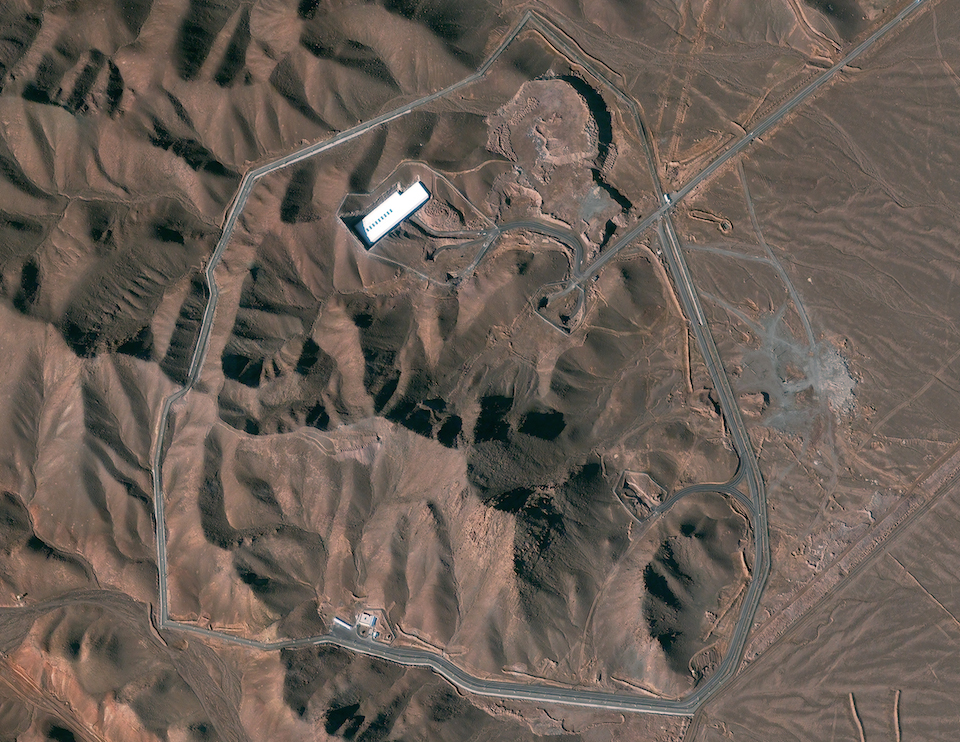One of the most interesting parts of the Joint Comprehensive Plan of Action negotiated between the P5+1 countries and the Iranian government has to do with the enrichment facility at Fordow, in central Iran. According to the plan, the facility is to be wholly converted to peaceful purposes. But the important thing to know about Fordow is its underground location. It was built deep under a mountain—perhaps as much as 260 feet below ground—at a former Revolutionary Guard Corps base near the sacred city of Qom. This subterranean site, presumably chosen by the military to be impervious to conventional airstrikes, could also be an unexpected asset for the facility’s civilian future.
To understand the importance of the changes at Fordow called for in the Plan of Action, it is worth first revisiting the facility’s history. The Iranians began building the site in 2006 in secret. It was designed to hold some 3,000 centrifuges, which were used to enrich Uranium to 20 percent—the upper limit allowed by the Internatonal Atomic Energy Agency. If the site had not been detected, it could have continued to enrich uranium to weapons grade.
But evidence of nuclear enrichment at Fordow was apparently revealed by Iranian dissidents and the site was publicly disclosed by the Iranian government in September 2009, when this evidence was shared with the International Atomic Energy Agency. The IAEA have conducted periodic inspections at the site ever since.
As a result of the interim nuclear agreement reached last fall, enrichment at the site has now stopped and the existing store of 20 percent enriched uranium has been diluted. Here is what has been agreed to in the Plan of Action:
- Iran has agreed not to enrich at the Fordow facility for fifteen years.
- Iran has agreed to convert Fordow into a facility for peaceful purposes only. It is supposed to become a nuclear physics and technology research center.
- Iran has agreed not to conduct any research and development associated with uranium enrichment for fifteen years.
- Iran will not have any fissile material for fifteen years.
If a formal agreement is reached to carry out this plan, almost two-thirds of Fordow’s centrifuges and infrastructure will be removed. The remaining centrifuges will not enrich uranium. Since they are gas centrifuges it is not clear what they could be used for. All centrifuges and related infrastructure will be placed under IAEA monitoring.
But what kinds of scientific research might Iranian scientists be able to pursue at a site like Fordow? If one does not know better it is easy to assume that all physics research in Iran is somehow focused on nuclear energy and that this must have a military component. There is no doubt that Iranian scientists are doing nuclear research, and the great popularity of physics in Iran among students must certainly be related to their nuclear program. But in recent years, Iranian science has matured in a number of different fields.
Take pure physics, where a great deal of work is now being done. It is easy to find online the papers that Iranian physicists have contributed to international journals and conferences. A Pakistani colleague of mine who is a particle physicist attended a conference on string theory in Tehran. Another colleague, a string theorist, working at CERN has supervised two Iranian doctoral candidates on their Ph.D. theses. Iranian physicists helped build one of the detectors used at the Large Hadron Collider at CERN, and have built a large variety of lasers.
The physics curricula at the major Iranian research institutions are comparable to those of any American university and, unlike in earlier generations, the courses are taught largely by physicists educated in Iran. A few of the professors are women. If Fordow were converted into some sort of international physics center it would be a true advance. But Fordow is deep underground. What could you do with that?
The answer may lie in neutrino physics. The great discoveries in neutrino physics have been made in mines and tunnels to shield the experiments from cosmic rays. The most famous of these was the experiment by Ray Davis for which he won the Nobel Prize. It was done some five thousand feet below ground in the Homestake Gold Mine in Lead, South Dakota. He installed a huge tank of what was essentially cleaning fluid and succeeded in detecting neutrinos from the sun. Let Fordow be converted into a neutrino detection center. What could be better?



